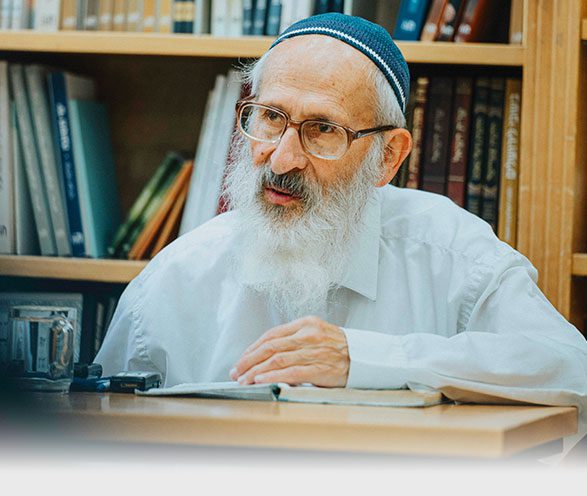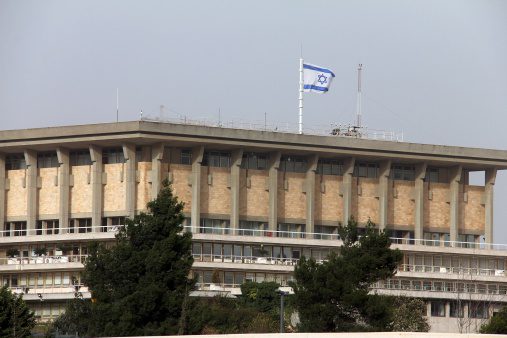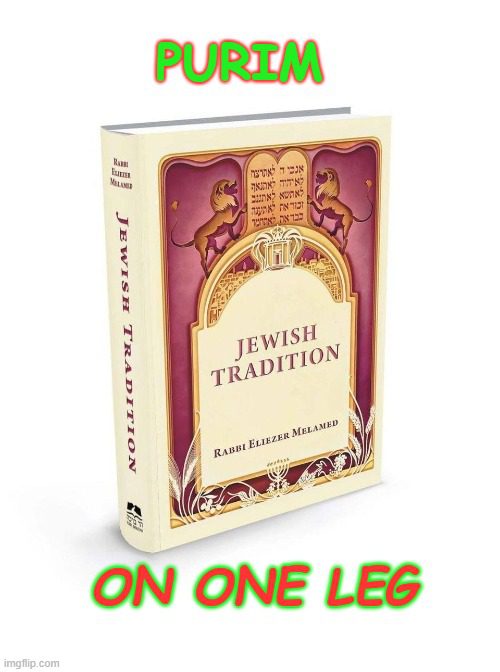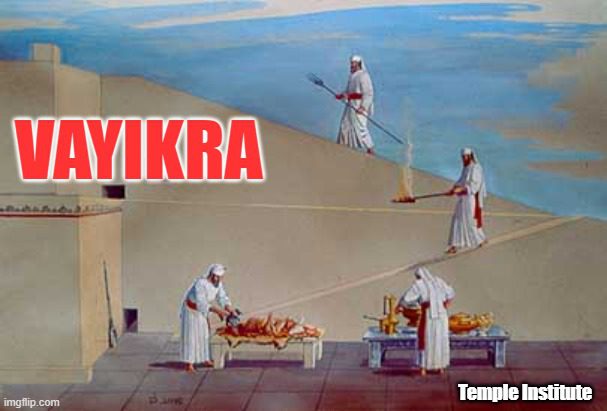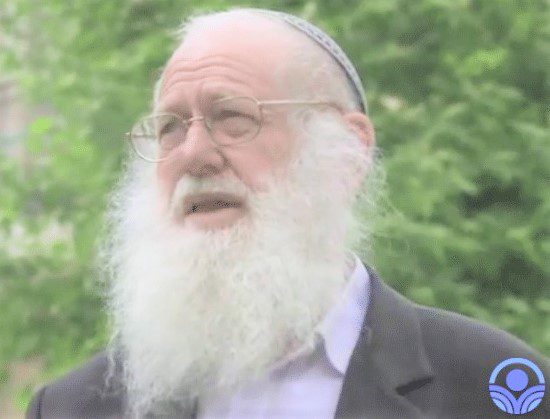Interview with Rabbi Avraham Blass, Director of the Yerushalmi Institute

by Tzvi Fishman
On Israel Independence Day and Jerusalem Day, one often hears the expression, “Atchalta D’Geula – the beginning of Redemption,” in reference to Medinat Yisrael, and to the understanding that the final Redemption appears through a gradual developing process, in natural historic stages, a little at a time. This concept appears in the Jerusalem Talmud, commonly called the “Yerushalmi.”
“Rabbi Hiyah Rabbah and Rabbi Shimon Ben Halafta were walking in the Arbel Valley at the break of dawn, just before the light of day. They watched the dawn unfold as the light began to shine. Rabbi Hiyah, the great one in wisdom, said to Rabbi Halafta, ‘Rabbi, thus is the Redemption of Israel – in the beginning slowly, slowly. And the more it progresses, it increases and grows.’” (Jerusalem Talmud Berachot, 1:1)
In advance of Jerusalem Day, I spoke with Rabbi Avraham Blass, Director of the Yerushalmi Institute in Jerusalem, which fosters the learning of the Jerusalem Talmud as a key to understanding the mission of the Jewish People during its stages Redemption in the Land of Israel.
It is no secret that most yeshivot in the world study the Babylonian Talmud, “the Bavli.” Can you point to some of the main themes of the Jerusalem Talmud which distinguishes it in content and idea?
The Jerusalem Talmud highlights values such as freedom, national responsibility, mutual respect, and equality. Its focus is not only on the individual Jew in his service of Hashem, but also on the Jewish Nation as a whole, promoting public, social, national, and universal ideals. It combines materialism and spirituality; mental and physical health; and emphasizes the vitality of prayer and serving Hashem with emotion. We believe that the time has come to disseminate the treasures of faith and spirituality which fill the Jerusalem Talmud, the foundations and values upon which the Torah and Israel’s Redemption are based.
Which tractates have you published to date?
The Yerushalmi Institute has produced tractate Berachot in two volumes, Taanit, Moed Katan, Rosh HaShana, Shekelim, Sukkah, and Megilla, all with commentary. In addition, we conduct extensive research and publish books and pamphlets on Jewish Thought based on the Jerusalem Talmud which shed light on the period of Redemption we are experiencing today with the revival of the Nation in Eretz Yisrael.
When did you begin to work on the project?
We began the work twenty years ago with the encouragement and blessing of the Gaon, Rabbi Sha’ar Yeshuv Cohen, of blessed memory, Chief Rabbi of Haifa. Today, Rabbi Yehoshua Weitzman, head of the Ma’alot Yeshiva, serves as the Institute’s president.
What motivated you personally to become involved with the Yerushalmi Talmud?
A letter written by HaRav Avraham Yitzhak HaKohen Kook changed my orientation to Torah learning. Rabbi Kook writes that in contrast to the “Bavli,” which centers around Talmudic analysis (pilpul) and the detailed study of Halacha, the “Yerushalmi” places greater emphasis on the blending of Halacha and Aggadah, the non-legal, narratives, parables, and maxims of Talmudic literature, (Letter 20). Rabbi Kook placed great focus on the learning of what he called “Torat Eretz Yisrael” which is rooted in the Yerushalmi, composed in the Land of Israel some hundred years before the Talmud which was written in Babylonia. This led me to investigate the subject. I quickly discovered that the Yerushalmi is more national in its perspective, placing more emphasis on the social and public matters of Israeli nationhood, fostering the value of initiative on behalf of the welfare of the collective, and presenting a complete educational philosophy geared to the development of the Israelite Nation.
Can you point to some differences in style between the Jerusalem and Babylonian Talmuds?
Rabbi Kook noted that the Yerushalmi is much more concise, with less back-and-forth Halachic argument and debate, since its orientation is to focus on the overall picture rather than on the details. The Yerushalmi delves more into the soul of the Torah, in its all-encompassing fullness. The Sages who composed the Yerushalmi strove to present educational guidelines for the Jewish Nation dwelling in its Land. Because the Aggadah is highlighted, its perspective is more eclectic and flowing. While the Babylonian Talmud has the goal of preserving Judaism in the exile, the Talmud composed in Eretz Yisrael has the goal of education the Nation toward a perfected society and a Tikun Olam – rectification of the world and the establishment of the Kingdom of G-d on earth.
Many people have the impression that the Jerusalem Talmud is more difficult to learn and understand than the Bavli. Is the Aramaic different?
Yes, the Aramaic of the Yerushalmi is the Aramaic of the Galilee, where much of it was written, but once a student learns the vocabulary, the learning is actually much easier than the Bavli, which is encumbered by its preoccupation with detail after detail and Talmudic debate.
If Halacha is determined according to the Bavli, why bother to learn the Yerushalmi?
One of the many distressing outcomes of the Exile is the over-predominance of the Halacha. I don’t mean to minimize the importance of Halacha adherence in any fashion – but rather to protest against the viewpoint which dismisses the importance of Aggadah and Jewish Thought. While the Bavli also recounts a great deal of Aggadic material, it is not given center stage. Vital to Judaism is a healthy and well-rounded sense of proper Jewish Awareness. Nothing can match the Yerushalmi for developing a true Israelite identity, especially in our day of national revival in Israel. Both the Haredi and Religious Zionist communities practice the same Halacha, yet their accompanying lifestyle and worldview seem totally different. This points to the fact that a person’s awareness and understanding of what the Torah demands from him are crucial to one’s service of Hashem and to one’s orientation to the building of the Israelite Nation in Zion.
The question still remains why did the world of yeshivot throughout the generations prefer to learn the Bavli?
As the old expression goes, “When in Rome do as the Romans do.” Four-hundred years after the exile started, the yeshiva world in Eretz Yisrael suffered a drastic decline. Bavel became the center of yeshiva study and Torah leadership. The Torah aristocracy naturally favored their own brand of Talmud. Also, as previously mentioned, since the Jews in exile had lost their national framework, something possible only in the Jewish Homeland, the Bavli’s preoccupation with the details of Halacha on the individual level was more suited to life in the Galut, where the survival of Judaism was a critical issue.
In honor of Jerusalem Day, can you cite a few examples how the Babylonian and Jerusalem Talmuds differ in relationship to Jerusalem?
The main differences are the increased standing that the Yerushalmi gives to Jerusalem, and in its teachings about Jerusalem for our time. At the very beginning of tractate Rosh Hashana, we learn that the Holy City cannot be divided. In Chagiga, Jerusalem is consider bigger than Alexandria, the equivalent of America’s largest city today (Chagigah, 2,2). The Yerushalmi states that speaking disparagingly about Jerusalem is a grave transgression, even in a context which might seem justified, as in a case where the judges in Jerusalem render a faulty decision which causes a person great damage (Taanit 4,5). The Mishna declares that when people who don’t keep the laws of kashrut on a daily basis come to Jerusalem for a Festival, they are considered as trusted to keep the laws. The Bavli attributes this greater religiosity to the spiritual elevation created when everyone is together celebrating the holiday. In contrast, the Yerushalmi attributes infusion of greater reverence to the city of Jerusalem itself (Chagigah, 3,6) which unites all the Nation. Of the many examples, allow me to cite one more, based on my understanding of a story in the tractate Peah (3,7). The Yerushalmi teaches that as long as the Jewish People don’t understand the importance of the Temple Mount and the Beit HaMikdash as the life-giving heart of the Nation, then all of the world will look upon the Land of Israel as a piece of real estate. Only when Am Yisrael realizes that Har HaBayit is essential to our optimum healthy existence will the nations of the world stop all of their efforts to cut up Jerusalem and the Jewish Homeland into pieces.
Isn’t there a problem that in many cases, the correct wording of passages in the Yerushalmi is uncertain?
Because the Yerushalmi was infrequently studied during the Exile, it didn’t undergo the process of never-ending clarification and scrutiny that was given to the Bavli. The problem concerning the correct wording and understandings of the text appears in specific cases where wordings create different meanings of the passage, however, it is a mistake to use this as a reason for not learning the treasures of the Yerushalmi.
Is it true that the Jerusalem Talmud doesn’t discuss mystic subjects like spirits and demons, which often appear in the Bavli?
Yes. The Yerushalmi’s orientation is very rational and down-to-earth.
To conclude the interview on a reminder of Lag B’Omer, why does the Yerushalmi spell the name of Rabbi Akiva with the letter “Heh” at the end? Is this a mistake?
No, it isn’t a mistake. As I mentioned, the Aramaic of the Yerushalmi is “Galilit,” which is different than the Aramaic of the Bavli. In the language of the “Galilit,” letters formed in the throat are often exchanged or dropped. Thus, the letter “Alef” in the Bavli often appears as “Heh” in the Yerushalmi. Rabbi Akiva is one of the Ten Martyrs whom we recall on Yom Kippur, and Rabbi Kooks notes that Akiva spelled with a final “Heh” comprises the last letters of a verse we recite during the “Kol Nidre” service:
“אור זרוע לצדיק ולישרי לב שמחה”.


